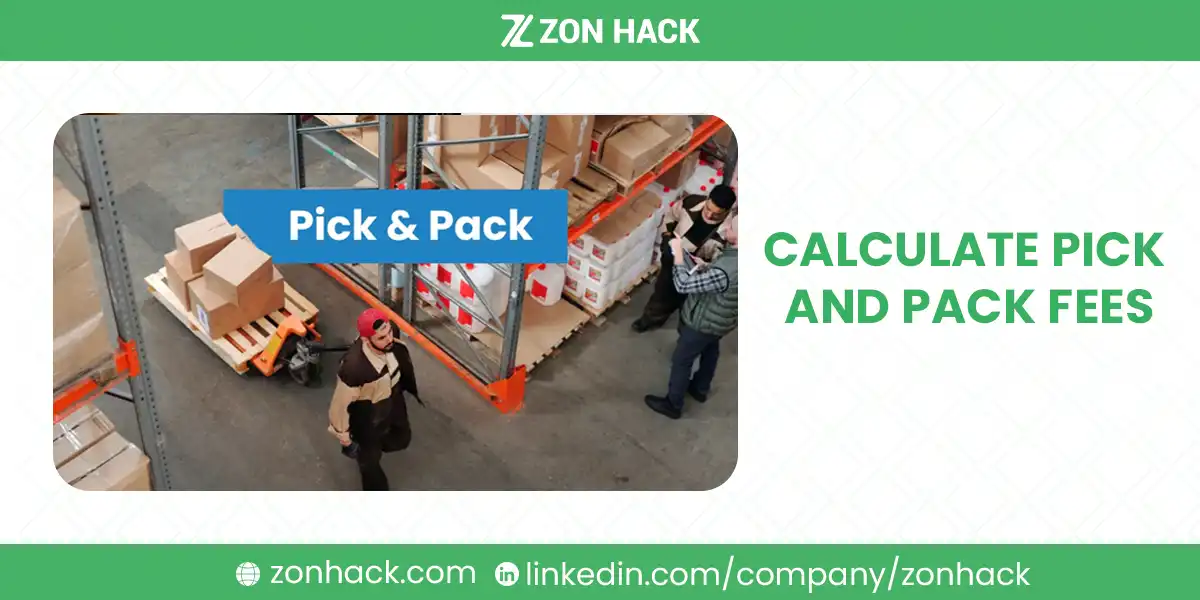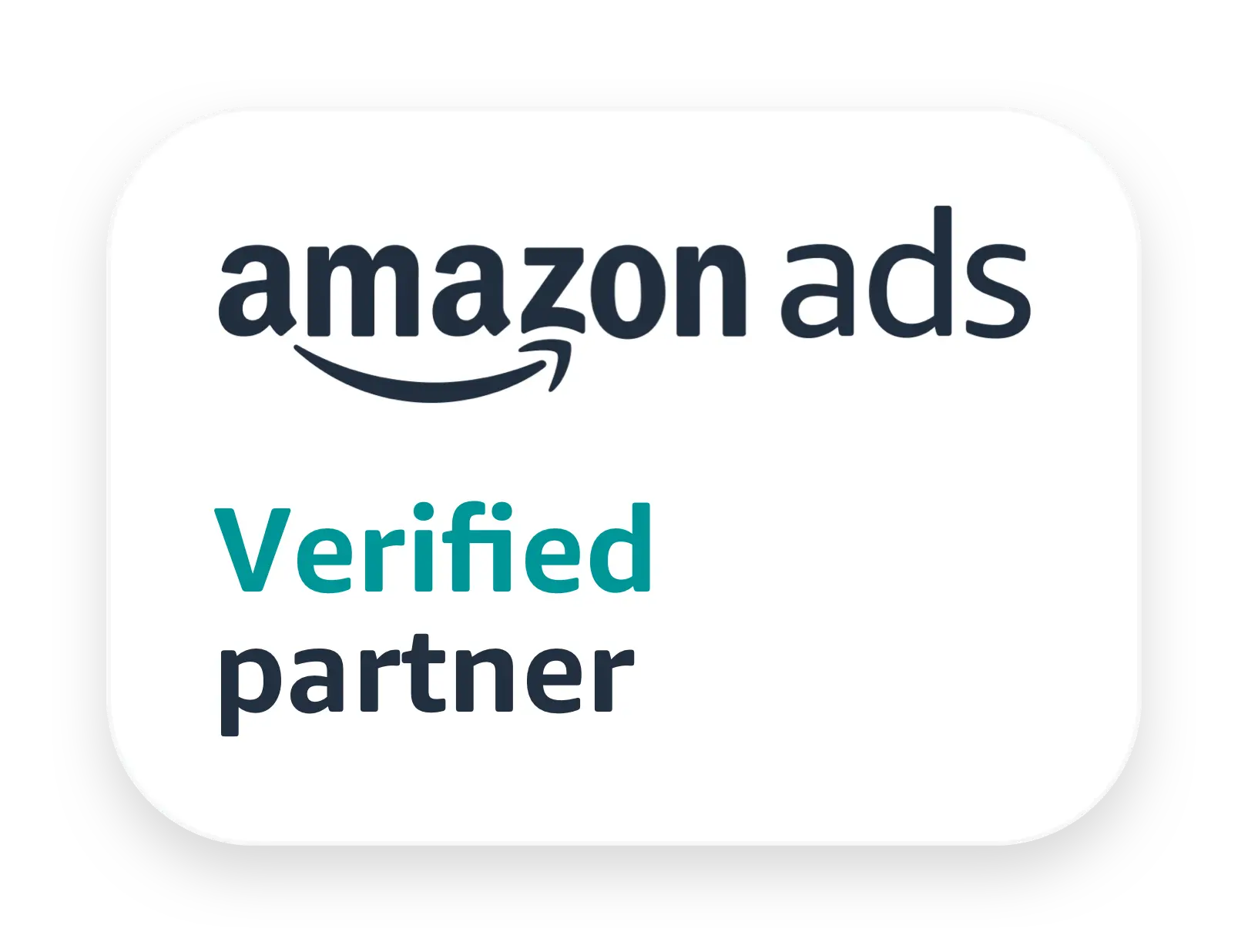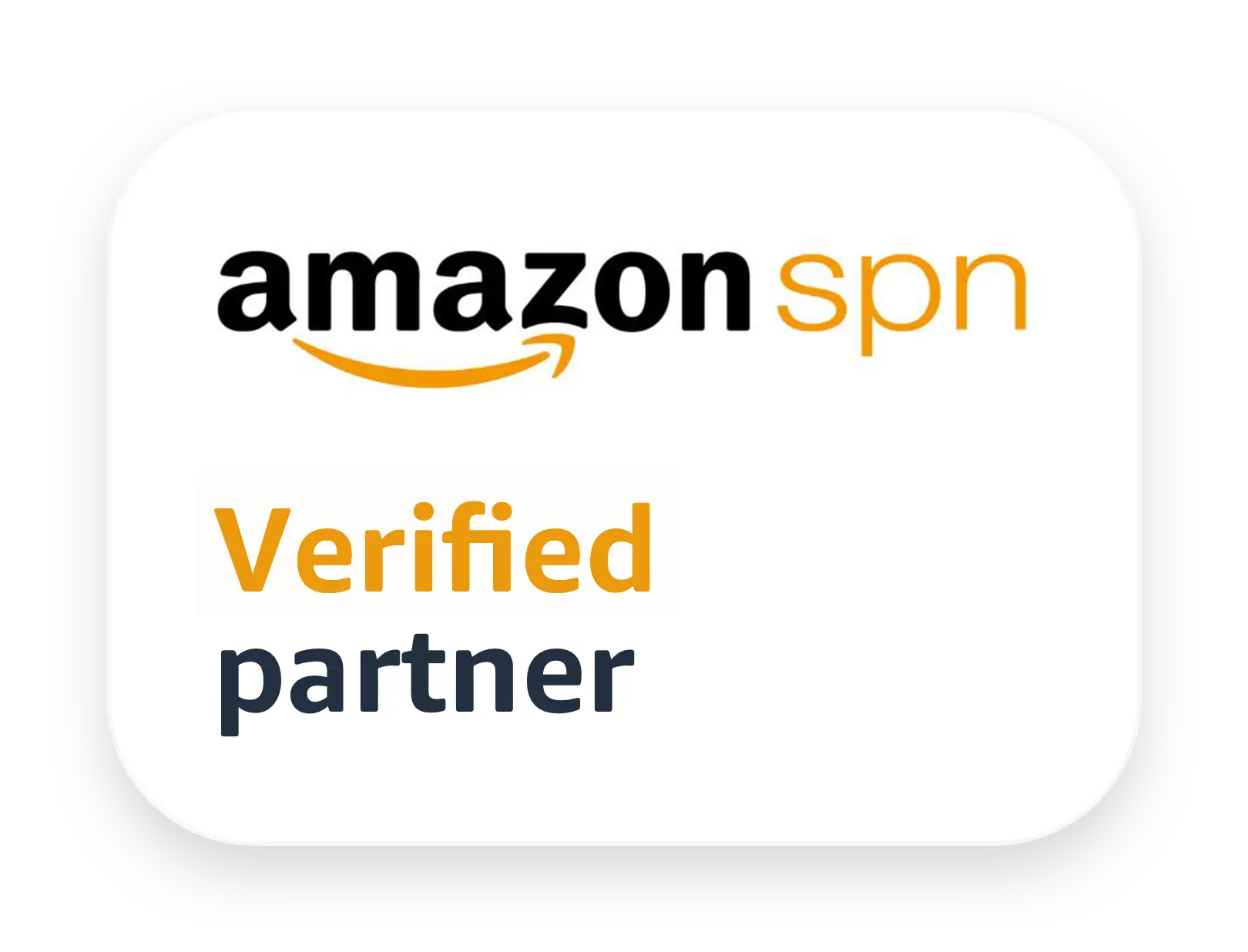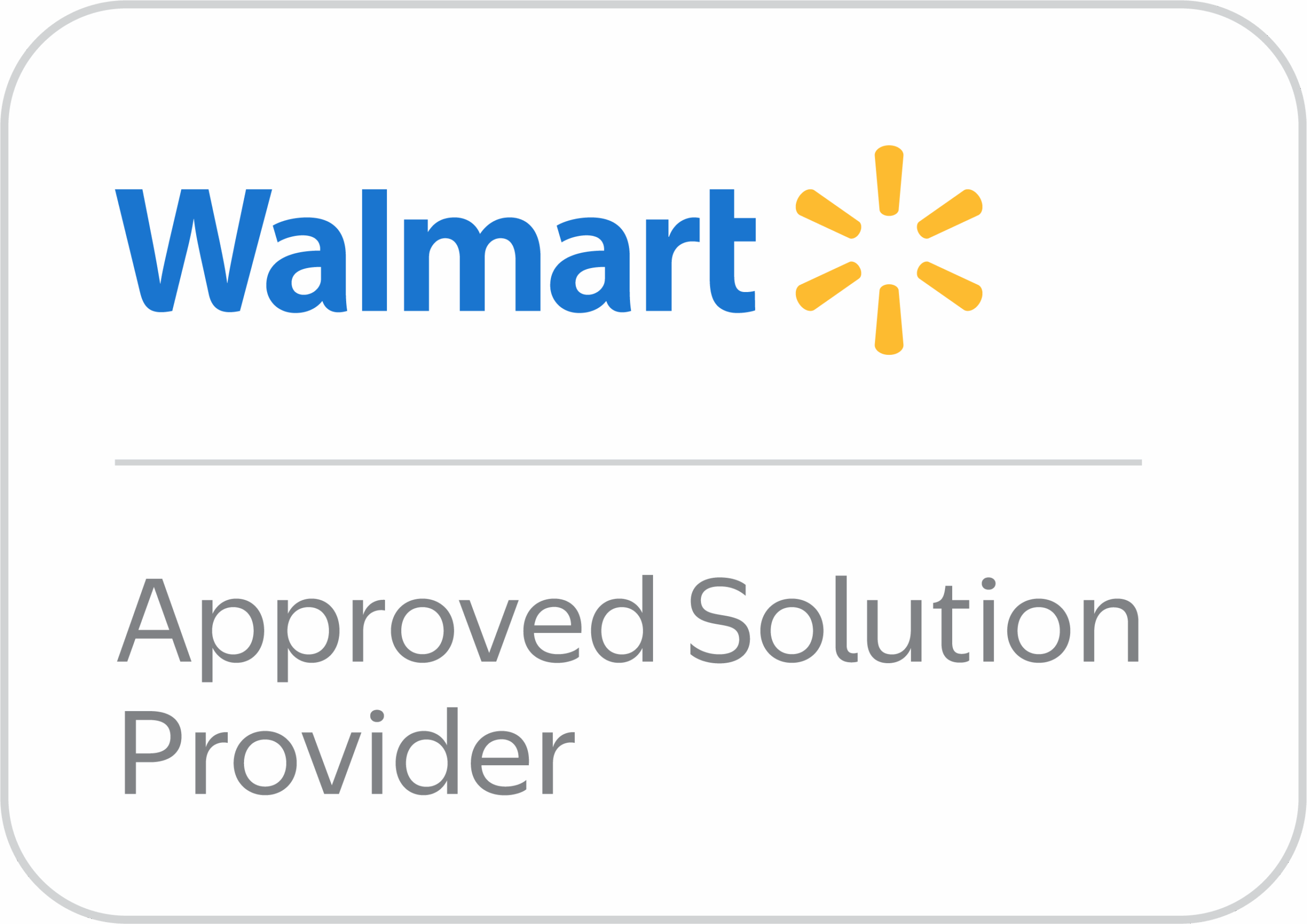Running an eCommerce business means constantly watching your margins. Every cent counts—especially when it comes to fulfillment. One of the most overlooked costs in this area? Pick and pack fees.
Whether you fulfill in-house or use a 3PL or Amazon FBA, understanding pick and pack fees is essential. These aren’t just line items on an invoice—they directly affect your bottom line, pricing strategy, and customer satisfaction.
In this guide, we’ll walk you through exactly what pick and pack fees are, how they’re calculated, what influences them, and how you can optimize or reduce them to stay competitive.
What Are Pick and Pack Fees?
At its core, pick and pack is the process of retrieving products from storage and packing them for shipment.
Imagine you receive an order for two different T-shirts and a phone case.
Your fulfillment team—or your 3PL—must:
- Locate each item in the warehouse (this is the “pick”)
- Pack them safely and correctly (this is the “pack”)
- Label the box and get it ready for the courier
The labor, time, and materials involved in that process are what make up your pick and pack fee.
Pick and Pack vs. Handling vs. Shipping: What’s the Difference?
This is where a lot of new sellers get confused.
- Pick and pack fees refer strictly to the warehouse labor and materials used to prepare the order.
- Handling fees are broader. They can include software systems, quality checks, temporary storage, and management oversight.
- Shipping fees begin after the order is ready and include courier or freight charges for delivery to the customer.
Many businesses roll handling into their “shipping cost” to make things easier for customers. But for you, the seller, breaking it down reveals the real operational expenses.
What Influences Pick and Pack Fees?
Not all pick and pack costs are created equal. The type of products you sell, your order volume, and even your packaging materials can all affect your final cost.
Let’s look at what typically goes into these fees.
Direct Costs
These are straightforward. You pay them whether you’re fulfilling yourself or outsourcing.
- Labor: Most warehouses pay fulfillment staff by the hour. The more time it takes to pick and pack an order, the higher the cost.
- Packaging: Boxes, bubble wrap, poly mailers, tape, labels—all of these materials cost money.
- Consumables: Things like printer ink, barcode labels, and thermal paper add up fast.
Indirect Costs
These are less obvious but critical. If you’re calculating your in-house costs, don’t overlook them.
- Warehouse rent or lease
- Utilities (lighting, heating, etc.)
- Software systems like inventory or order management tools
- Employee management—training, HR, benefits, etc.
- Maintenance for equipment like forklifts or conveyors
Real-World Cost Impact
Let’s take a simple example.
A fulfillment center might charge $3.50 per order, which includes:
- Picking the first item
- Basic packaging
- Labeling
Every additional item in the same order may cost $0.75–$1.25, depending on labor intensity and packaging needs.
If you’re using a 3PL and shipping 1,000 orders per month with an average of two items per order, that’s:
- Base pick and pack: 1,000 × $3.50 = $3,500
- Additional item fee: 1,000 × $1.00 = $1,000
Total pick and pack cost per month = $4,500
That’s $4.50 per order, which adds up quickly if you’re not pricing your products correctly.
What Affects Pick and Pack Fees the Most?
There are a few factors that have an outsized impact on your fees:
1. Product Size and Weight
Smaller, lighter products are faster and cheaper to handle.
Larger or heavier items require more time, heavier-duty boxes, and possibly extra labor.
A flat, lightweight book might cost $2.50 to pack.
A kitchen appliance might cost $6.50 or more.
2. Fragile or Special Handling
If your items are fragile, perishable, or hazardous, expect extra costs.
Fragile goods may need:
- Double-boxing
- Bubble wrap or foam inserts
- Manual labeling
3. Packaging Complexity
Standard corrugated boxes are cheap.
But if you use custom-branded packaging, tissue paper, or thank-you cards, expect fulfillment labor to go up.
Custom packaging might add 60–90 seconds per order. That’s meaningful when you’re paying by the minute.
4. Fulfillment Speed
Rush orders? Same-day dispatch?
Expect a priority handling surcharge. Some 3PLs add 10–20% for same-day processing during peak hours.
How to Calculate Pick and Pack Fees (Step-by-Step)
Here’s how to break it down in-house or evaluate a 3PL’s quote. It’s not just about counting boxes—it’s about understanding true cost per order.
Step 1: Calculate Your Direct Costs
Let’s say you’re shipping 2,000 orders a month.
- Packaging materials: $0.90 per order
- Labor (avg 6 mins @ $20/hour): $2.00 per order
Total direct per order = $2.90
Step 2: Allocate Indirect Costs
Let’s say your monthly overhead (warehouse, software, admin) is $6,000.
Divide that across 2,000 orders: $3.00 per order
Step 3: Add a Margin (If Using 3PL)
If you’re quoting to clients or evaluating a 3PL, add 15–30% for their business profit.
Say 20% margin on $5.90:
That’s an extra $1.18
Final Pick and Pack Fee Per Order = $7.08
That number isn’t universal, but it’s a realistic starting point. Many sellers overlook the hidden overheads—leading to underpricing and eroded profits.
What Pricing Models Do 3PLs Use?
When working with a fulfillment partner like ShipBob, Deliverr, or even Amazon FBA, pick and pack is part of a broader pricing structure.
Here’s what you’ll commonly see:
Per Order + Per Item Model
- Base fee per order: $3.25–$4.75
- Additional item fee: $0.75–$1.50 per SKU
Hourly Rates
Less common, but used for complex workflows or kitting projects.
You might pay $30–$50/hour for specialized fulfillment.
SKU-Level or Case-Level Pricing
For B2B or wholesale orders, some partners charge per case or pallet.
This works well for repeatable bulk orders but not for typical DTC sales.
ZonHack Tip: Always ask 3PLs for a detailed breakdown. You want to know exactly what’s included in “pick and pack” and what’s not—returns, restocking, or oversized handling often come at a separate cost.
A Closer Look at Amazon FBA’s Pick and Pack Fees
Let’s dive into the giant in the room: Amazon FBA.
Many sellers don’t realize that Amazon’s fulfillment fees are essentially pick, pack, and ship charges bundled together.
They vary based on:
- Item size tier
- Item weight
- Product category
Here’s an example from Amazon’s 2024 US FBA Fee Schedule (for non-apparel):
| Size Tier | Weight | Fulfillment Fee |
| Small Standard | < 4 oz | $3.22 |
| Large Standard | 6–12 oz | $3.77 |
| Large Standard | 1–2 lb | $4.75 |
| Oversize | 2–3 lb | $8.26 |
These fees include pick and pack, shipping to the customer, and customer service—but not storage or long-term holding fees.
If your product is heavier or bulky, expect double-digit per-unit fulfillment costs.
How to Reduce Pick and Pack Fees (Without Compromising Quality)
If you’re not optimizing your fulfillment workflow, you’re leaking money. That’s the simple truth.
Let’s explore real-world strategies that help sellers—whether fulfilling in-house or using a 3PL—reduce pick and pack costs without hurting customer experience.
1. Bundle or Kit Products Strategically
Instead of selling individual items, create bundles (e.g. 3-pack skincare kits, summer accessory bundles, or “starter” packages).
- Fewer picks per order = lower labor cost
- 3 items picked as one kit = 1 pick fee instead of 3
- Pre-kitted items can often be stored together, saving warehouse time
ZonHack Insight: Some of our clients reduced fulfillment costs by 15–20% just by creating pre-assembled bundles for frequently ordered combos.
2. Standardize Packaging
If your products are similar in size, shape, or weight, use the same packaging for everything. This reduces:
- Time spent choosing box sizes
- Packaging material waste
- Errors during fulfillment
Even shaving 20–30 seconds per order can result in huge savings at scale.
3. Automate Order Routing
Use tools like ShipStation, ShipHero, or Amazon’s Multi-Channel Fulfillment to automatically route orders to the best warehouse based on geography, inventory, or shipping method.
- Reduces split shipments
- Reduces labor per order
- Increases delivery speed
ZonHack can help you integrate smart routing systems based on fulfillment logic, saving time and money with each order batch.
4. Negotiate With Your 3PL
Yes—you can negotiate. Especially if you:
- Have consistent order volume
- Offer SKU-level forecasting
- Provide pre-labeled inventory
Many 3PLs offer volume discounts, reduced pick fees on high-SKU velocity, or waive handling fees for standardized packaging.
5. Outsource to a Specialized Fulfillment Partner
Some products (like apparel, supplements, or heavy goods) have niche fulfillment companies that offer lower fees and faster workflows.
- Apparel-focused 3PLs often charge $2.75–$3.25/order, significantly less than generalists.
- For oversized goods, regional 3PLs often undercut FBA or ShipBob by 10–20%.
ZonHack helps match Amazon and Shopify sellers with fulfillment partners tailored to their product category and logistics needs.
Fulfillment KPIs: Are Your Pick and Pack Fees Really Worth It?
Cost is only half the story. Speed, accuracy, and customer satisfaction are just as important. That’s why tracking fulfillment KPIs is essential.
Here are the top metrics you should be measuring monthly (at least):
1. Order Accuracy Rate
Formula:
(Correct orders shipped ÷ Total orders shipped) × 100
Target: > 99%
A 3PL charging $1 less per order isn’t worth it if you’re constantly issuing refunds or replacements.
2. Order Lead Time
How long does it take between order received and order shipped?
Target: Same-day or next-day fulfillment
Longer lead times = unhappy customers and negative reviews.
3. Cost per Order (Fully Loaded)
This includes:
- Pick and pack fees
- Packaging
- Handling
- Labor
- Indirect overhead
Target varies—but you should know your true fulfillment cost per order, not just what’s on the invoice.
4. Return Processing Time
If your returns take weeks to be restocked or refunded, you’re losing working capital.
ZonHack Tip: Track how long it takes for returned items to be received, restocked, and marked available again in your system.
Choosing Between In-House vs. Outsourced Fulfillment
Let’s settle the debate. Should you build your own fulfillment system or hand it off?
Here’s a quick comparison:
| Category | In-House Fulfillment | 3PL Fulfillment |
| Control | High (custom packaging, process) | Medium to Low (fixed SOPs) |
| Startup Cost | High (space, staff, software) | Low (pay-as-you-go model) |
| Scalability | Limited by physical space | Easily scalable (multiple hubs) |
| Pick and Pack Fee | Variable, often cheaper at scale | Flat fee per order |
| Speed | Depends on staffing | Fast—many offer 1-day SLAs |
| Flexibility | Full control over changes | May be slower to adapt |
General Rule:
- < 200 orders/month = start in-house or hybrid
- 1,000 orders/month = explore a 3PL to save time and scale faster
ZonHack helps brands bridge that gap. We can assess fulfillment cost structures, help you negotiate with 3PLs, and design transition plans for sellers scaling past the 500–1,000 order mark.
Bottom Line: Don’t Let Pick and Pack Kill Your Margins
Pick and pack fees are not a fixed cost.
They’re negotiable, improvable, and—if ignored—dangerously easy to overspend on.
Whether you’re just launching or shipping thousands of orders a month, understanding your fulfillment cost structure is key to profitability.
ZonHack can help you:
- Audit your current fees
- Find fulfillment partners
- Negotiate better rates
- Build scalable SOPs
We’ve helped eCommerce brands save up to 30% on fulfillment without sacrificing speed or quality.
FAQs
What is the average pick and pack fee?
For DTC eCommerce orders, the average is $3.00–$5.50 per order, depending on size, weight, complexity, and volume. FBA includes it in their broader fulfillment fee.
Is it cheaper to pick and pack myself?
If you have low volume (under 200 orders/month), doing it yourself may be cheaper. But as volume scales, labor and inefficiencies make 3PLs more cost-effective.
Can I negotiate pick and pack rates?
Yes. Especially if you offer:
- Predictable volume
- Pre-kitted items
- Custom labeling
3PLs often reduce fees for high-volume or streamlined SKUs.
How do I calculate my true fulfillment cost?
Add:
- Labor (per hour × minutes/order)
- Packaging (box, tape, labels)
- Indirect overhead (rent, utilities)
- Software and admin
Divide by total orders to get fully loaded cost per order.
Does Amazon FBA charge separate pick and pack fees?
No. Amazon FBA includes pick and pack in their Fulfillment Fee, which is based on size and weight. But they also charge for storage, returns, and long-term inventory—so read the fine print.




